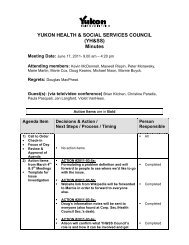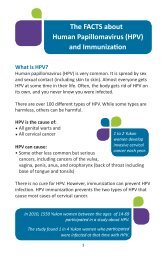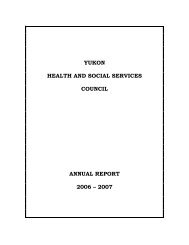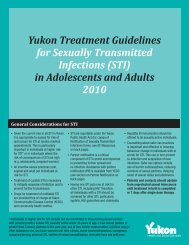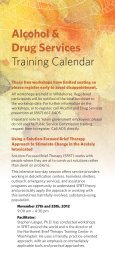Principles of Immunology - Health and Social Services
Principles of Immunology - Health and Social Services
Principles of Immunology - Health and Social Services
You also want an ePaper? Increase the reach of your titles
YUMPU automatically turns print PDFs into web optimized ePapers that Google loves.
Community Nursing<br />
Yukon Immunization Program<br />
Section 14 - <strong>Principles</strong> <strong>of</strong> <strong>Immunology</strong><br />
2011 March<br />
Page 15<br />
<br />
<br />
<br />
Recombinant Vaccines<br />
Vaccine antigens produced using genetic engineering technology.<br />
Polysaccharide Vaccines<br />
Polysaccharide vaccines are composed <strong>of</strong> long chains <strong>of</strong> sugar molecules<br />
that make up the surface capsule <strong>of</strong> encapsulated bacteria. The immune<br />
response to a pure polysaccharide vaccine is typically T cell-independent.<br />
Conjugate Vaccines<br />
By linking a polysaccharide to a protein (diphtheria toxoid protein is commonly<br />
used) the immune response becomes T cell-dependent <strong>and</strong> immunogenicity<br />
is improved in infants <strong>and</strong> young children < 2 years <strong>of</strong> age. This process is<br />
called conjugation; hence the term “conjugate vaccines.”<br />
3.0 VACCINE IMMUNE RESPONSE<br />
3.1 INTRODUCTION<br />
Vaccines interact with the immune system <strong>and</strong> produce an immune response similar to<br />
that produced by the natural infection, but they do not subject the recipient to the<br />
disease <strong>and</strong> its potential complications. Vaccines produce immunological memory<br />
similar to that acquired by having the natural disease. The antigen is the part <strong>of</strong> the<br />
vaccine that stimulates the immune response.<br />
The immune or antibody response to non-replicating vaccines (inactivated/subunit) is<br />
different from the response to replicating vaccines (live attenuated).<br />
3.2 ANTIBODY RESPONSE TO A NON-REPLICATING VACCINE<br />
Inactivated/subunit vaccines will need more doses to build an adequate <strong>and</strong> lasting<br />
immune response (Figure 8).<br />
<br />
<br />
Primary immune response:<br />
Antibody following the first exposure to an antigen is primarily IgM. Response is<br />
<strong>of</strong> brief duration <strong>and</strong> low intensity.<br />
Secondary immune response:<br />
Antibody following the second <strong>and</strong> subsequent immunogenic challenges is<br />
primarily IgG. Memory cells are already present at time <strong>of</strong> repeat exposure <strong>and</strong><br />
make the specific antibodies more rapidly.


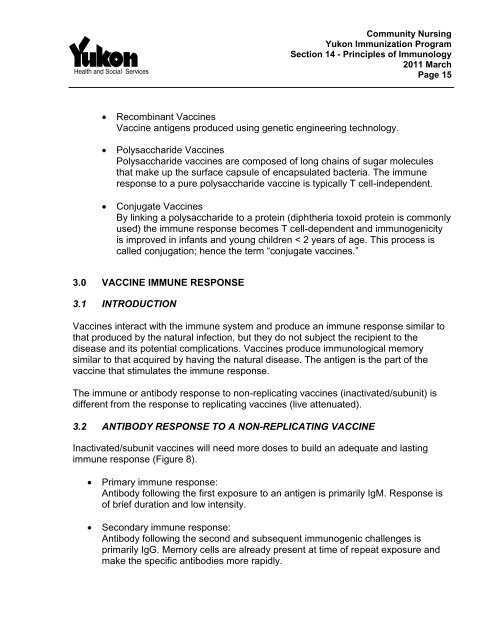
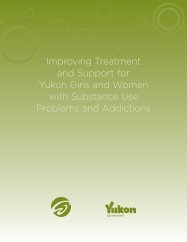
![Women and Alcohol: A women's health resource [2326.26 KB ]](https://img.yumpu.com/22340649/1/190x245/women-and-alcohol-a-womens-health-resource-232626-kb-.jpg?quality=85)


